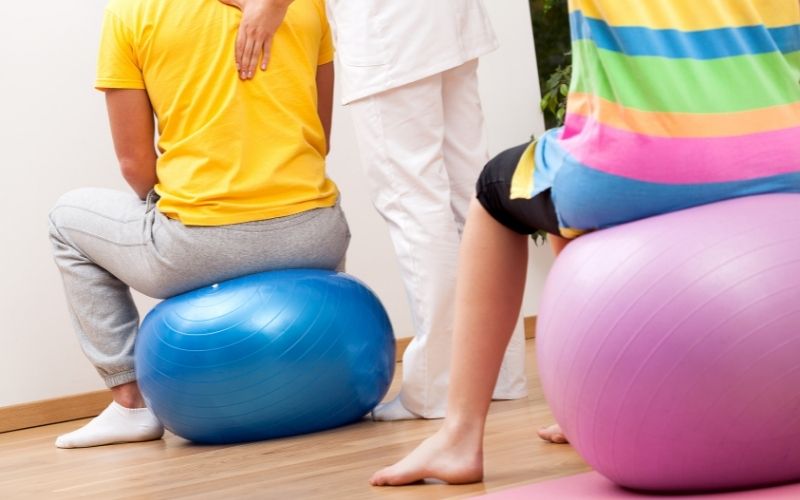There’s nothing more off putting than spending a sunny afternoon answering emails while gently bouncing on an exercise ball, only for your train of thought to be interrupted by a giant POP!
Instantly, you are thrown onto the floor. Your beloved exercise ball, the very same one that has helped stabilize you and strengthen your core, is now just a few pieces of rubber laying pitfully on the ground next to you.
Can an exercise ball really burst? What can you do to avoid this explosive fate? Here’s everything you need to know!
Table of Contents
Can an Exercise Ball Burst?
The good news is that your exercise ball isn’t going to spontaneously burst. They are quite reliable and stable ergonomic products, so there’s no need to worry about them exploding in the dead of night.
With that being said, having your exercise ball burst is possible. Having one burst underneath you can be terrifying and may even cause injury. After all, no one wants thick rubber or silicone flying around their space.
With proper use, you can help avoid having an exercise ball burst on you. So make sure you know the facts and how to use your exercise ball properly!

4 Common Causes of Exercise Ball Bursts
1. Surpassing the Weight Limit
Think about what happens when you sit on an inflated balloon. Chances are, it’s going to pop under your weight.
An exercise ball functions similarly, although it is significantly stronger than your everyday party balloon.
Paying attention to the weight limit on an exercise ball is essential. It will keep you safe and help preserve the longevity of the ball. If a ball has too much pressure put on it, it will have no choice but to burst open.

Having an exercise ball burst because you surpassed its weight limit can be quite upsetting. No one wants to feel like they were too heavy to enjoy a product.
We strongly recommend looking at the weight limit on an exercise ball before purchasing it. If your weight tends to fluctuate, take that into account.
Having a child (or pet) sit on your lap will also increase the amount of weight the ball has to support.
If you have a child that loves to cuddle with you while you work, you may want to opt for a chair instead.
2. Over Inflation
Underinflating an exercise ball will leave you with a lackluster and uncomfortable sitting experience. Meanwhile, overinflating an exercise ball can be dangerous and equally uncomfortable.
Your ball needs to be soft enough for you to sit on without it stretching too much.
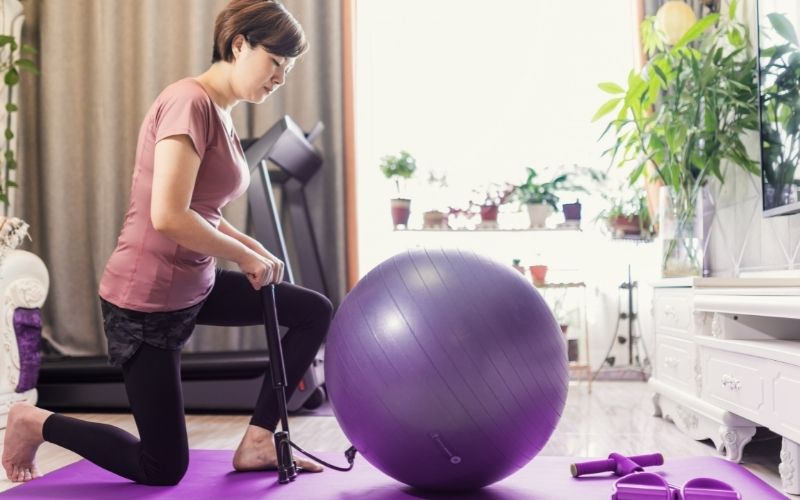
A good rule of thumb is the two-inch test. Inflate your ball then take your fingers and see how much you can push into the ball.
Your ball should give about two inches — any less than that means that you probably over-filled it.
If you’re lucky enough to use an electric pump to inflate your exercise ball, you can use the psi (pounds per square inch) to help determine how much your ball needs to be inflated.
Generally, an exercise ball should be filled to anywhere from 0.6 to 0.9 psi.
You can decide how firm you want it within that range. The higher the psi, the more firm it will be.
Another way to tell if your exercise ball is properly inflated is to measure it. When looking for a ball, you’ll find that there are different sizes.
If you buy a 65 cm exercise ball, it should be around 65 cm when fully inflated.

Take the ball and hold it near a wall. With a light pencil, mark the top of the ball onto the wall, similar to when you measure a child’s height.
Next, grab your tape measurer and measure the length from the floor to the pencil marking.
If your ball is taller than it’s advertised height, you should release some air from it.
3. Incorrect Usage
An exercise ball is not a toy, but that doesn’t mean a child isn’t going to try to turn it into one.
If you live with children, sit them down and explain that while it is technically a ball, it’s not one meant for throwing and bouncing.
The same goes for dogs, who love to chase and bite the big, rubber exercise balls. However, we acknowledge that explaining this to your canine friends may not be as simple.
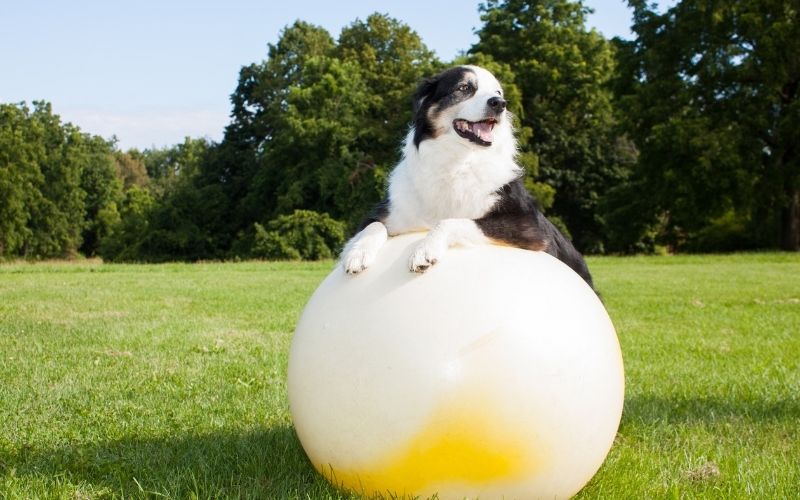
With that being said, adults can misuse exercise balls, too.
Make sure not to bounce on the exercise ball too hard when using it. Gentle movements up and down are fine (and even fun), but anything more intense might damage or pop your ball.
The ball should also be sitting on a flat surface. Make sure the area is clean and clear. That means no tiny sharp objects nestled into the carpet or blending in with the color of the floor.
4. Contact with Fire
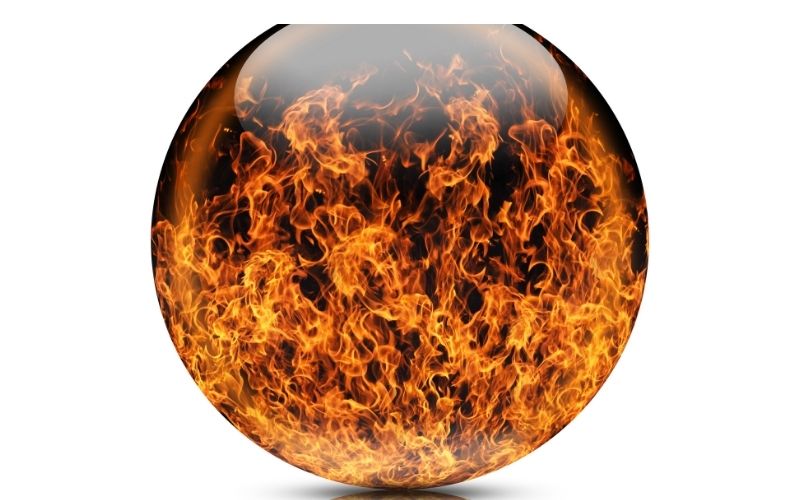
Most exercise balls are made of heat-resistance materials that won’t melt or pop easily. However, you should always check what your ball is made out of beforehand.
Using an exercise ball near a heater or fireplace sounds like a cosy, ergonomically-friendly idea, but it may end up in catastrophe.
You never want your exercise ball to be hot. The surface should always be at room temperature.
If you’re in an environment that requires you to sit close to a heat source, ensure that your exercise ball is not directly in front of the heater or open flame.
Move your workspace a few yards/meters away from the heat source and regularly check on the exercise ball’s surface temperature to ensure it’s not heating up too much.
3 Safety Tips to Use an Exercise Ball Properly
1. Find the Right Surface
Looking for the correct place to use your exercise ball will save you a lot of time and money fixing punctures or having to replace the ball altogether.
You should only use exercise balls on smooth, clean, and clear surfaces.
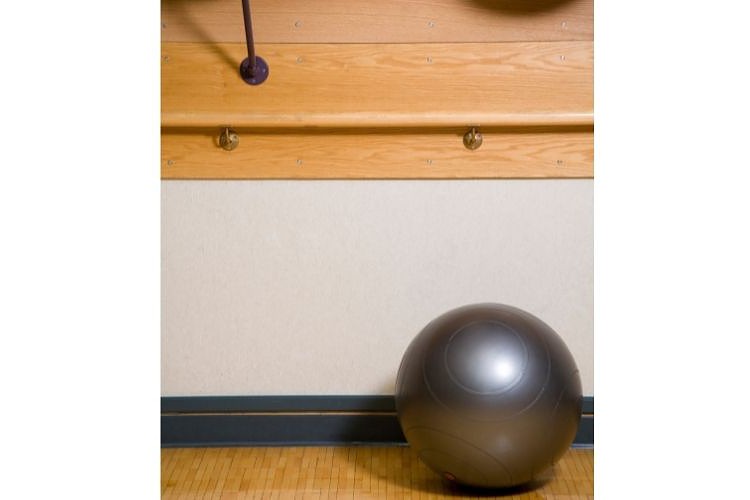
We do not recommend using exercise balls on shaggy carpets. While they are very soft and cushioning, it’s difficult to find sharp debris nestled into the ‘hairs’ of the carpet.
Vacuum or sweep your designated space regularly to keep your ball clean and safe.
2. Use it Against a Wall
Want to avoid slipping off of your exercise ball? Using it against a wall is an easy way to ensure you don’t lose your balance and fall off in between (or during!) important Zoom meetings.
If you want to play it extra safe, set your desk up in a corner so you have two supportive walls to keep you from rolling around during your work day.
You always want to be applying an even amount of pressure to your exercise ball, and the best way to do that is to sit directly on top of it. Having a supportive wall may help beginners achieve this seating position.
3. Maintain Proper Posture

Some people get an exercise ball thinking it will fix all of their posture problems. However, you still need to be conscious about the way that you’re sitting.
Check in with your spine now and then and ensure that it’s aligned with your body. Your shoulders should be back and your feet should be firmly planted on the ground.
Once you get used to this position, it will begin to feel more organic.
Improper use of an exercise ball can lead to back pain, so listen to your body and alternate between the exercise ball and chair when needed.
How to Maintain an Exercise Ball?
Exercise balls are sensitive to light and heat. If you want yours to last as long as possible, you need to store it in the correct setting.
Your exercise ball should be kept in a cool, dark room or closet when not in use. Leaving it in direct sunlight will damage the rubber and cause it to deflate at a faster rate.
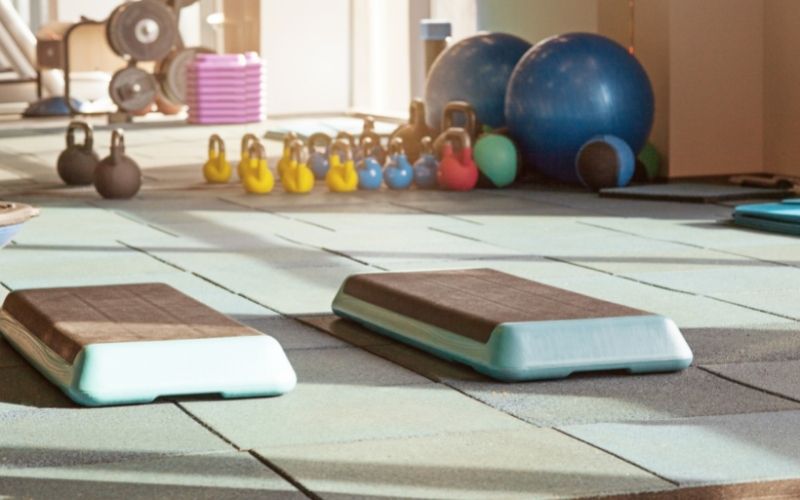
Also ensure that you’re using the right kind of ball. There are exercise balls designed for gym use, while others are meant for home offices rather than athletic settings. Using the right kind of ball will extend the product’s lifespan and help you get more out of it.
Finally, keep your exercise ball away from pets. Cats and dogs are adorable, but they have very sharp claws and teeth that will pierce an exercise ball instantly.
In Conclusion
An exercise ball can burst, but there’s a lot you can do to avoid that nasty, noisy fate. Make sure to keep your exercise ball safe from any heat and sharp objects.
Using the product correctly is also essential. That means no heavy bouncing!
If you’re a bigger-bodied person, make sure to check the weight limit of an exercise ball before purchasing it. It should be clearly labeled on the packaging, but if you can’t find it, know that the standard weight limit for an exercise ball is around 250 pounds.
Have you ever had an exercise ball burst underneath you? What do you think caused the pop? Let us know in the comments below!
Good luck!

My name is Vance, and I am the owner of To Ergonomics. Our mission is to improve your workflow by helping you create a supportive and welcoming environment. We hope that you’ll find what you’re looking for while you’re here.

